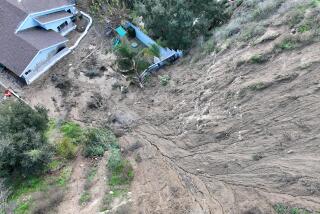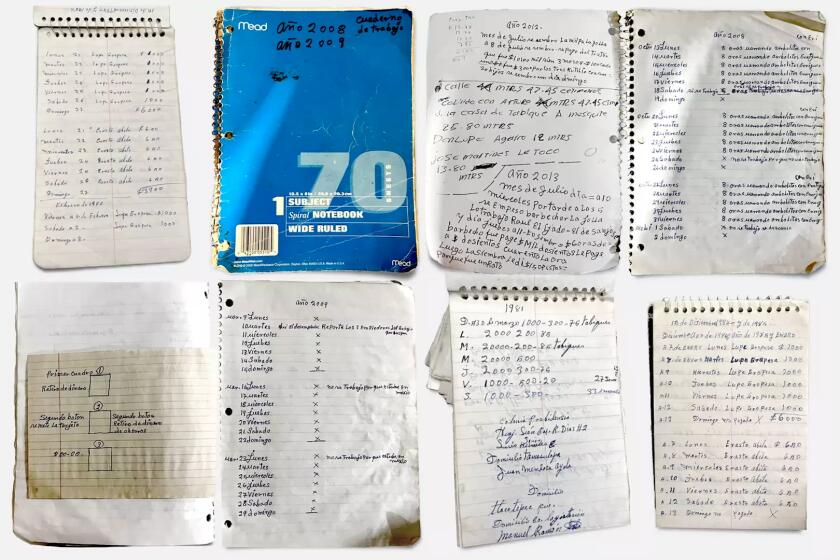Drought hits Mississippi: Ol’ Man River just keeps limping along
Even in the best of times, the Mississippi River is a slow and torpid thoroughfare. But when an extended drought persists and the muddy waters recede, squeezing barges through the narrow channels becomes an expensive, and sometimes impossible, chore.
The great summer drought of 2012 has closed lower sections of the river, shut down harbors and forced barges to run aground as river levels drop to near-record lows. With no significant rains in sight, authorities responsible for keeping the Mississippi open for commerce say things are likely to get worse before they get better.
On Wednesday, nearly 100 towboats and barges were backed up near Greenville, Miss., at an 11-mile stretch of river shut down after a barge ran aground overnight. The barge was freed and refloated Wednesday afternoon, but normal two-way traffic was restricted one way, Petty Officer Ryan Tippets of the U.S. Coast Guard in New Orleans said.
PHOTOS: Barges grounded in Mississippi river
By late afternoon, two vessels were moving northbound, to be followed by southbound vessels overnight, Tippets said.
“We’ve gone from a superhighway to a little one-lane road,” said Robert Anderson of the Mississippi River Commission in Vicksburg, Miss., established by Congress in 1879 to promote commerce on the river.
The backups are delaying grain and industrial products headed to markets, costing barge owners at least $10,000 a day, Anderson said. Every year, about 180 million tons of cargo flow up and down the Mississippi’s 700-mile southern section between Cairo, Ill., and Baton Rouge, La. — a vital conduit in the nation’s transfer of goods. A typical barge carries 1,600 tons, versus 100 tons for a rail car and 25 tons for a tractor-trailer.
River depth has dropped to just 9 feet at the confluence of the Mississippi and Ohio rivers, down from a record 61.7 feet at the height of last year’s Mississippi River floods, Anderson said. River flow has dropped to 200,000 cubic feet per second from a high of 2.5 million cubic feet per second during those floods.
The Mississippi’s all-time record low was set during the devastating 1988 drought that caused an estimated $1 billion in losses. The river was recorded at minus 10.7 feet at Memphis that year. The level at Memphis on Wednesday was minus 8.9 feet, Anderson said.
If the drought continues, river levels at Memphis could conceivably set a new low, said Rene Poche of the U.S. Army Corps of Engineers in Memphis. “We don’t know what quantity of rain we need, but we do need a lot of it,” Poche said in a telephone interview.
Low flow levels have closed at least four of the 19 harbors between Cairo and New Orleans, Anderson said, and at least a dozen barges have run aground in August.
Many barge owners are now carrying lighter loads, costing them more per ton to move cargo but also reducing chances of running aground. The barges transport corn, soybeans, wheat, coal, chemicals, petroleum products, fertilizer and construction materials.
The effect on consumer food prices is likely to be slight unless there are long and extended river closures, said Donald C. Sweeney, associate director of the Center for Transportation Studies at the University of Missouri-St. Louis. Most corn, soybeans and wheat are shipped to overseas markets, Sweeney said.
But because petroleum products from overseas and Texas do go to U.S. markets, and increased shipping costs over extended periods could drive up gasoline prices slightly, Sweeney said. Coal bound for power plants in the South could also be affected. However, transportation costs represent only a fraction of overall product costs, Sweeney said.
Eight dredges are working two 12-hour shifts a day, trying to clear the river’s main navigation channel along a 1,200-mile section from St. Louis to New Orleans, Anderson said. A ninth dredge is to be added next week.
The so-called dustpan dredges dig down like giant dustpans, scooping up tons of sediment and discharging it along the side of the channel, Poche said. A typical dredge costs the corps $90,000 a day to operate.
The Corps of Engineers is charged with providing a minimum navigation channel 9 feet deep and 300 feet wide on the lower Mississippi to keep commercial traffic moving. Since the 1988 drought, stone dikes have been installed to help speed the flow of water through certain areas, reducing the amount of sediment deposited in the navigation channel.
The Coast Guard is laying buoys to help vessels stay within the navigation channel.
The lower Mississippi normally records its lowest annual levels in September and October, Anderson said. But the river reached dangerously low levels beginning in July.
“The worst is ahead of us,” Maj. Gen. John W. Peabody, commander of the corps’ Mississippi Valley Division, told officials at a water control meeting in Memphis this week.
ALSO:
Mother decapitates toddler, puts head in fridge, kills herself
Texas epicenter of worst West Nile outbreak in years, CDC says
Train in fatal Baltimore derailment was going at approved speed
david.zucchino@latimes.com
More to Read
Start your day right
Sign up for Essential California for news, features and recommendations from the L.A. Times and beyond in your inbox six days a week.
You may occasionally receive promotional content from the Los Angeles Times.







